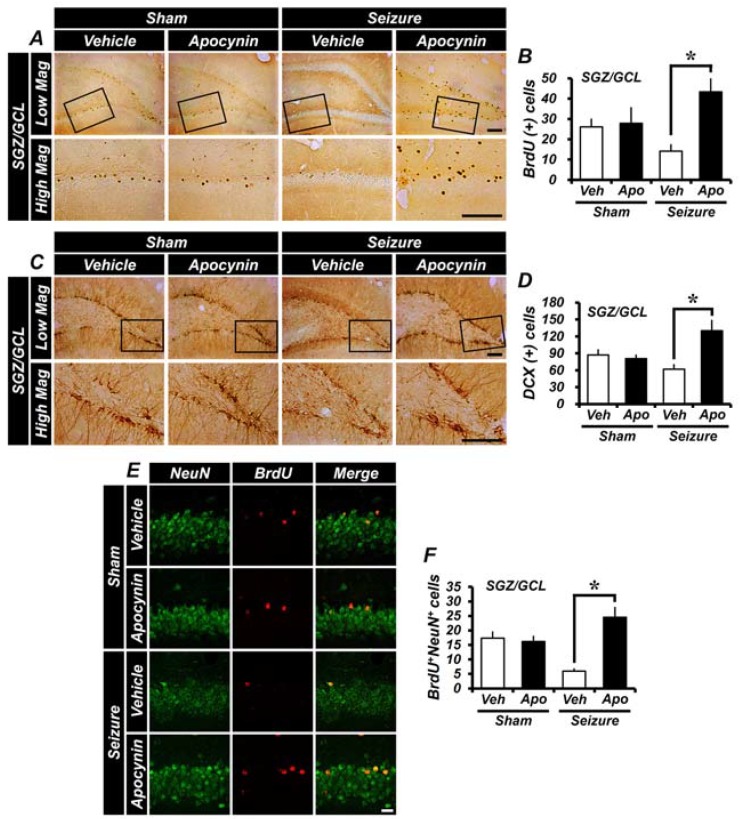Figure 6.
Apocynin treatment increases the survival rate of newly generated cells and neuroblast production in the SGZ of the DG. The survival rate of newly generated cells was assessed by BrdU staining. Long-term survival of newly proliferated cells was increased by apocynin treatment. Differentiation of newly proliferated cells into mature neurons was increased by apocynin treatment. (A) BrdU+ cells are shown in the SGZ of the DG. Four weeks after injecting BrdU in an adult (8–9 weeks old), BrdU-labeled cells can be seen in the granule cell layer. After 4 weeks of inducing seizures, the number of cells labeled with BrdU decreased. The apocynin-treated group had a decreased number of BrdU-labeled cells after seizures, but still greater than the vehicle-treated group. Boxed areas are higher magnification (bottom row). Scale bar = 100 μm. (B) The graph shows BrdU-labeled cells quantified in the hippocampus. The number of BrdU+ cells (survived for 4 weeks) was significantly higher in apocynin-treated rats than in vehicle-treated rats. (C) Immunohistochemical staining of this figure confirmed the presence of neuroblasts. In the seizure model, when the DCX+ cells were identified in the SGZ of the DG 4 weeks after apocynin treatment, the number of cells was significantly increased compared with the vehicle-treated group. Boxed areas are higher magnification (bottom row). Scale bar = 100 μm. (D) The graph is the mean value obtained from five individual sections and represents the number of DCX+ cells in the SGZ of the DG. (E) BrdU+NeuN+ cells are shown in the hippocampal DG region. BrdU+NeuN+ cells were identified in the granule cell layer at 4 weeks after BrdU injection. Scale bar = 100 μm. (F) The graph shows BrdU/NeuN labeled cells quantified in hippocampus. The number of BrdU+NeuN+ cells (survival for 4 weeks) was significantly higher than in the vehicle-treated group in the apocynin-treated group. Data: Mean ± S.E.M., n = 5–8 from each group, * p < 0.05. Low Mag, low magnification; High Mag, high magnification.

